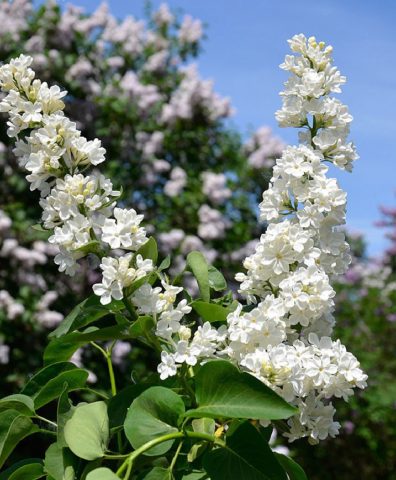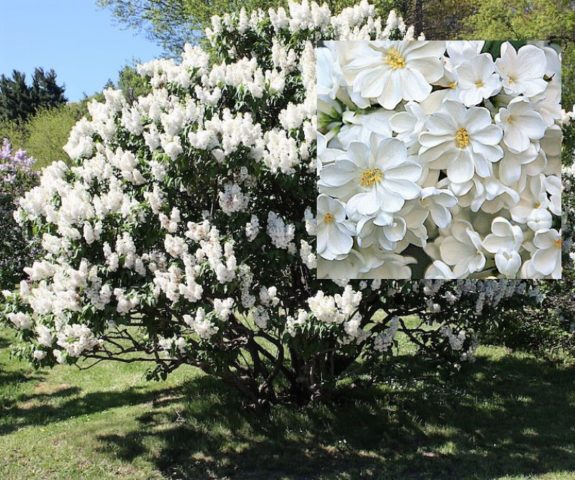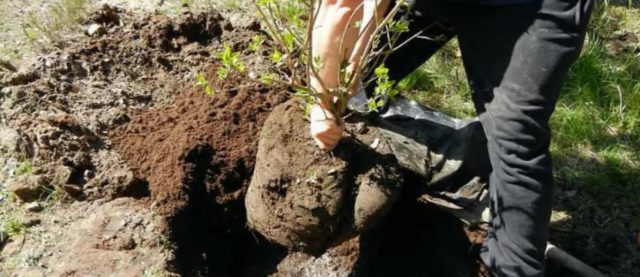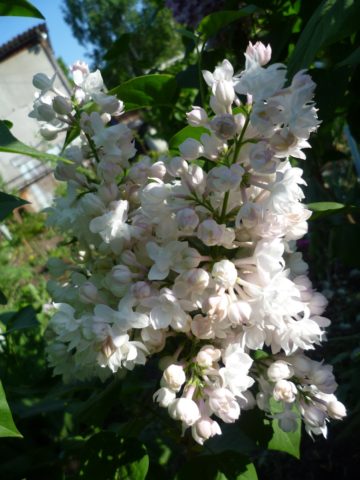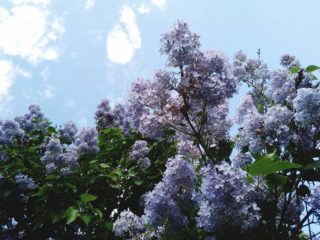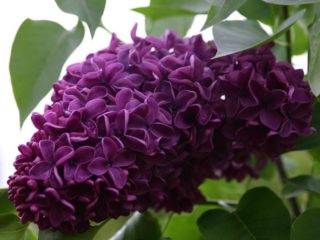Content
Rochester Lilac - American selection cultivar, created in the 60s of the XX century. The culture entered the top 10 breeding varieties of the international collection and earned the highest marks for decorativeness. This is an original, unique variety that has no analogues. Based on the Rochester lilac, several hybrids with radial multi-petals were created, differing from each other in the color of the inflorescences.
Description of lilac Rochester
Rochester lilac is a deciduous perennial plant that belongs to the elite varieties with a high degree of decorativeness. A culture was created for landscape design. The frost resistance of lilac allows it to be grown in all climatic zones of Russia. Rochester variety withstands temperatures down to -40 ° C without loss. The growing season is not affected by moisture deficit. The season with minimal rainfall tolerates much better than high humidity.
The exotic look and unpretentiousness in the care of Rochester lilacs have found application in the design of personal and summer cottages. In the garden, lilac takes the leading position in decorative habit. Use the plant in mass planting to form a hedge. The shrub looks colorful as a tapeworm and as part of a composition with flowering and conifers.
The Rochester lilac variety is mid-flowering. The plant gives a slight annual growth, at the age of 6 years it is considered an adult. During this period, the shrub grows up to 2 m. It forms a spherical crown of the correct shape. The main direction of growth is in width. The diameter of an adult plant is 3.5 m. The bush of the variety is dense, densely leafy, branched.
Description of Rochester lilac, presented in the photo:
- The bush is multi-stemmed, perennial stems of medium thickness with a gray rough surface. Flexible, durable, strong wind resistant. Young shoots are thin, olive-colored, after a year they acquire the color of the main trunks.
- At the tops of perennial shoots, 2 inflorescences are formed from large flower buds.
- Leaves are medium in size, opposite, dark green, lanceolate. The surface is smooth, glossy, with dark beige veins. The shape of the leaf plate is wide at the bottom, pointed at the top. Length - 13 cm, width - 8 cm. Petioles are long, curved.
- The fruits are small in insignificant quantities, the seeds are equipped with a lionfish, ripen in the second half of autumn.
How the Rochester lilac blooms
Lilac blooms in June, if the spring is early and warm, the formation of buds begins in the second half of May, flowers bloom in a week. During this period, the uniqueness of the plant is manifested. The standard varieties of common lilac have 4 petals, while the Rochester variety can have up to 20. On the panicle there are multi-petal forms and classic ones.
The photo shows the Rochester lilac during flowering. General characteristics:
- The formation of inflorescences begins on perennial shoots and last year's ones. Inflorescences are long - 25 cm, vertical, pyramidal, dense, heavy.
- The buds are green, rounded.
- The flowers are in the shape of a regular oval, the petals are non-double, waxy, radially located from the center. The flowers are large, with an average diameter of 3 cm, the color is white.If the plant has received an insufficient amount of UV light, there is a slightly noticeable pink tint in the color of the petals. The core is yellow, in four-petal forms it is small, the more petals, the larger the middle.
- Duration of abundant flowering - 25 days. The shrub forms inflorescences after five years of growth. In a sunny area, a three-year-old Rochester lilac bush may bloom. The aroma of the plant is strong, persistent, characteristic of the culture.
Breeding features
Generative propagation of the Rochester lilac variety is possible, but not productive. Seed germination is low, this method is used in specialized nurseries, creating conditions as close as possible to the climate of the historical homeland.
At the initial stage of breeding, a seedling is acquired. The stem of the variety is short, the formation of the first branches begins close to the soil surface, therefore the best option for lilac breeding is by layering from the mother bush.
Cuttings are used less often, since the material takes root poorly. Green shoots with two full-fledged buds are used, the material is harvested before sap flow. You can propagate the shrub by root shoots, it begins to grow when the lilac reaches the age of four. There is not much of it, but quite enough for a mass landing.
Planting and leaving
Planting and subsequent farming of Rochester lilacs is no different from other varieties of culture. The plant can be classified as unpretentious, but to obtain a decorative crown, the conditions stated in the varietal characteristics are created.
Recommended timing
Planting work is carried out at the end of summer. For regions with a temperate climate, this is the end of August. Before the onset of frost, at least 1.5 months should remain, this time is enough for the seedling to take root and successfully overwinter. In the south, the culture is planted at the end of September. Plant adaptation in warm climates is faster.
Site selection and soil preparation
Lilac Rochester, according to gardeners, blooms in partial shade, but the decorativeness of the habit is higher in a place open to the sun. Place the plant in accordance with the design decision. The northern side is not considered, near large-sized trees with a dense crown. The plant feels comfortable on the southern slopes, partial shading from the building wall on the east side is allowed.
The Rochester variety does not react well to the acidic composition of the soil, in this case the plant produces small flowers, the snow-white color of which is often diluted with beige. Soils for planting are neutral or slightly alkaline. The acidic composition is neutralized with alkaline agents. The soil for planting should be loamy, light, fertile, drained. A wetland area is not suitable for planting.
2 weeks before placing the lilac, a planting recess with a diameter of 50 * 50 cm is dug on the site. The depth depends on the seedling. Proceed from the following calculation: the height from the root to the neck, it is left on the surface, plus 20-25 cm for drainage and a layer of nutrient mixture. Gravel or crushed stone of the middle fraction is used as drainage, it is placed immediately in the planting pit. The soil is mixed with compost, ash, sand, 200 g of superphosphate is added to 10 kg. One part of the soil mixture is poured onto the bottom of the hole, the other is left for planting.
How to plant correctly
Rochester lilacs are planted on a cloudy day or in the evening after sunset. Before planting, the root of the seedling is dipped for 2 hours in a preparation that stimulates growth. Step-by-step instruction:
- The lilac root is dipped in a thick clay solution.
- At the bottom of the pit, a cone-shaped hill is made in the center.
- They put a plant, distribute the roots.
- Part of the fertile mixture is poured, carefully tamped.
- Pour out the remnants so that there is no void near the root.
- Ash is poured near the root circle, watered.
With a mass planting, at least 2.5 m is left between the seedlings. Lilac Rochester is a sprawling shrub, therefore, it needs space to form a decorative crown.
Growing lilacs Rochester
If the seedling is rooted and successfully overwintered, further vegetation for the gardener will not be a problem. Caring for the variety is not laborious, standard.
Watering
The variety is drought-resistant, does not react well to waterlogging of the root system. Watering is necessary for young seedlings in spring, if there is no precipitation - 2 times every 10 days. After watering, the soil is loosened so that there is no crust, along the way weeds are removed. After the formation of leaves, the young siren has enough seasonal rainfall. The adult plant is watered abundantly during bud formation. Shrubs are not watered during flowering.
Top dressing
When planting a seedling, the required amount of micronutrients is introduced into the hole, they are enough for full growth for 3 years. In spring, organic matter is introduced to an adult plant, compost diluted in water or dung together with ash is suitable. The complex of mineral fertilizers is recommended to be applied once every 2 years.
Mulching
When planting a seedling, the soil around the plant is covered with sawdust, straw, peat, and needles. The layer should be about 15-25 cm, it all depends on the winter temperature. In the spring I remove the mulch, the procedure is repeated until the age of three lilacs. An adult shrub is not mulched.
Pruning
The Rochester lilac bush does not require molding, the crown has a regular rounded shape. The variety as a tapeworm looks harmonious in its natural form. In the spring, they carry out sanitary cleaning, remove dry branches, frozen shoots. The main activities are to rejuvenate the shrub. Several old trunks are removed. Three-year-old shoots are used as a substitute.
According to gardeners, after flowering in the common lilac Rochester, it is necessary to remove the inflorescences, before autumn, young buds will form on the tops of the shoots, in the spring the culture will bloom profusely. The variety, planted as a hedge, is formed according to the design concept.
Preparing for winter
According to the description of the variety, Rochester lilac is a plant with good winter hardiness. The lower the temperature in winter, the more abundant the bloom in spring. An adult plant does not require shelter for the winter; there is no need to mulch the soil. The only autumn event is abundant watering, which is carried out if there was no rainfall at the end of summer. Young seedlings are mulched with a root circle, the crown is not covered for the winter. Lilac completely replaces frozen shoots during the growing season.
Diseases and pests
The Rochester lilac variety rarely gets sick and is practically not affected by pests. If the air humidity is high for a long time, powdery mildew infection is possible. Eliminate the fungus with fungicides. Lilac moth parasitize on culture, eliminate adult insect and caterpillars "Fozalon". Rose leafhopper is a threat in warm climates. They destroy the pest with Fitoverm and Kemifos.
Conclusion
Rochester lilac belongs to the collection of elite varieties of American selection. A perennial plant with high frost resistance, unpretentious to the composition of the soil, is grown in regions with a cold climate. Ornamental culture, undemanding in care, is used for landscaping gardens and personal plots.
